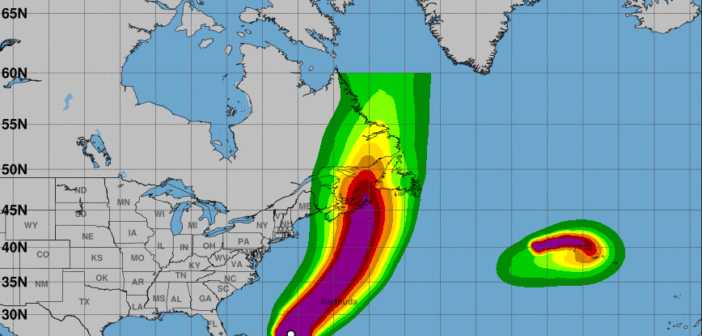After devastating Puerto Rico and the Turks and Caicos, Hurricane Fiona was set to sideswipe Bermuda as a Category 4 storm with winds of up to 73 mph and then continue churning north toward Nova Scotia and the Canadian Maritimes.
The Atlantic hurricane season got off to a slow start this year, but Fiona made up for lost time. It killed at least five people in the Caribbean as it tore through last weekend, including one in Guadeloupe, two in Puerto Rico, and two in the Dominican Republic. (It slipped past the Virgin Islands.)
Fiona hit Puerto Rico as a Category 1 hurricane, dumping more than two feet of rain and leaving hundreds of thousands of people without power or water. Fiona swept over Puerto Rico just five years after Hurricane Maria devasted the island, leaving thousands dead and cutting power and water to more than one million people for months.
The storm strengthened as it headed north from Puerto Rico and the Dominican Republic. It reached the Turks and Caicos with sustained winds of almost 125 mph, leaving many people on Grand Turk and smaller keys without power.
It then continued as a Category 4 storm with sustained winds of 130 mph as it swirled north. It was due to pass west of Bermuda, hitting that island with winds up to 73 mph, according to the National Hurricane Center.
As a precaution, the U.S. State Department issued a travel advisory urging U.S. citizens to reconsider going to Bermuda because of the storm.
Fiona is not expected to hit the coast of the U.S., but it could generate waves of 8 to 19 feet over the weekend. “Near the coast, the surge will be accompanied by large and destructive waves,” the hurricane center said. The surge is also expected to bring up water levels along the Bermuda shoreline.
The hurricane center says it then will hit portions of Nova Scotia with winds up to 100 mph late Friday.
Another storm is forming just east of the Windward Islands and will reach the Caribbean later this week. The warmer water there is favorable to make it stronger as it could enter the Gulf of Mexico. Read more:




